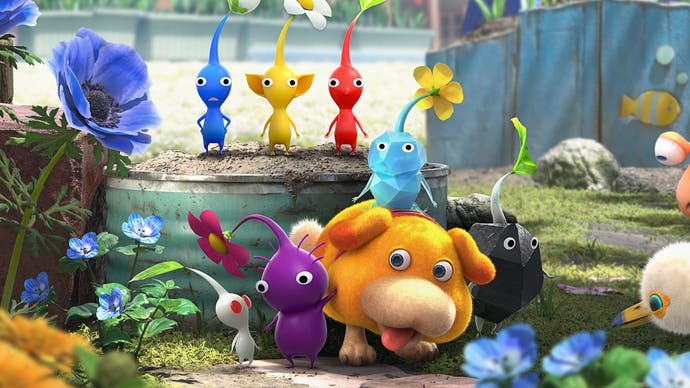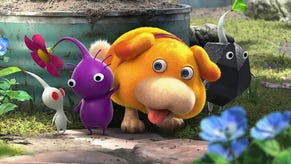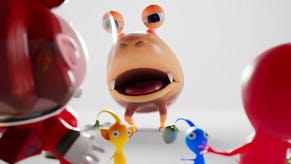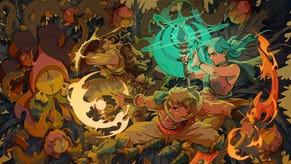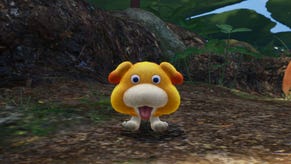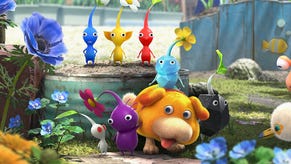Pikmin 4 streamlines its strategy, and partners you with a scene-stealing space pup
Dogged determination.
It's been eight years - eight years! - since Pikmin creator and Nintendo legend Shigeru Miyamoto announced the existence of Pikmin 4 to Eurogamer back in 2015. Now, excitingly, it's just a few weeks away. Was the version Miyamoto had in mind back then similar to the one I've now played? How did the project change over the years since? I'd love to know, as Pikmin 4 is certainly a different beast from its immediate predecessor on Wii U. Changes have indeed been made - and nearly all for the better - as the Pikmin series looks back to the best of the series' past while ultimately seeking a more modern approach overall, with its eyes set on securing a wider audience.
For those new to Pikmin, the series has always offered a cute-looking experience with a deeper layer of strategy underneath - one that requires planning and skill to maximise both your time and available Pikmin reserves in order to explore garden-like environments, defeat bug and bird-like enemies, collect resources and treasures - and crucially to do so within a limited time frame. With your worker ant-like Pikmin able to be grown and replenished fairly easily, strategic time management is where Pikmin's greatest challenges often lay - both in terms of maximising what can be done during each in-game 15-minute day before you must scurry back to safety, and in the limited days remaining to complete your overall goal. For Pikmin 4, it feels like Nintendo has worked to soften this challenge - to make the game's skill level better match its friendly-looking visuals - or, at least, that's the case early on.
Crucially, Pikmin 4 removes the series' usual overall time limit, so there's now no need to worry about depleting life support or replenishing food reserves. The triumphant return of Pikmin 2's dungeon-like caverns acts to focus gameplay, and also allows for longer sections of adventure without the surface's day/night clock to worry about. And there's now the ability to rewind time if a day is going terribly and you'd prefer to start over.
Other changes include auto-targeting for enemies and items so you can throw Pikmin far more accurately. You can move your spaceship base and Pikmin onion within areas to be closer to you, meaning far less backtracking is necessary. You can also now gather and store building resources to repair bridges and the like, meaning you always have a stock to use and no longer have to hunt specific fragments across the map. There's a local co-op offering that allows a friend to join you and gain a Super Mario Odyssey-esque on-screen cursor to provide aid, via such things as the ability to throw rocks at enemies.
Perhaps most radical of all, however, is the apparent ditching of Pikmin 3's fiddly three-character management, replaced with a single hero (who's now a customisable avatar, rather than a set, named protagonist) and a rather different partner, Oatchi the space dog. Whether you've already been won over by this pup's prominent introduction to the series here or not, you'll be spending a lot of time with Oatchi regardless. He's a friendly face for the game's marketing, and a handy assistant whose abilities can ease gameplay. He can attack, he can carry items, he can charge forward and clear obstacles your Pikmin cannot.
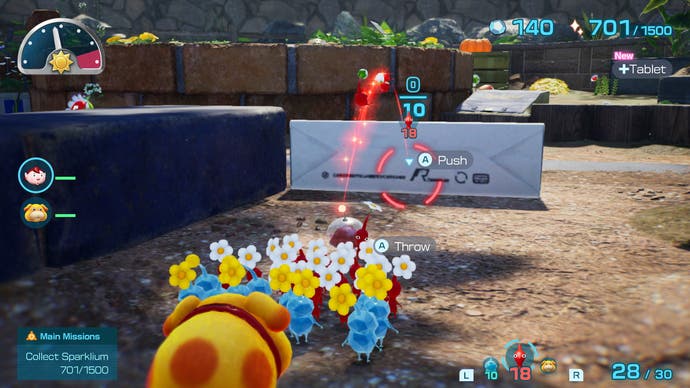
In the absence of a humanoid partner for your main character (during the game's early stages, at least), Oatchi acts as the game's secondary protagonist - and you quickly unlock the ability to switch over and play as him instead. But rather than replicating your own skillset, playing as Oatchi offers a different experience, with just your main avatar as the only character able to actually command a squad of Pikmin.
Switching to Oatchi, who can jump fair distances, is the only way to get up and over the starting area's small ledges. Your humanoid hero and Pikmin squad, meanwhile, can now scale vertical cliff faces adorned with climbing points. In one cave area, you must swap between your hero and Oatchi to reunite and leave together, using him to press buttons which reverse the direction of moving conveyor belts in a puzzle that reminded me a little of ilomilo. In another section, your hero and Pikmin can climb a cliff face, while Oatchi must find another way around.
Looking at the game's selection of upgrades, it's clear Oatchi will continue to become more useful, with later talents including the ability for Oatchi to gather up stray Pikmin that might otherwise be picked off by predators or left behind at sundown. At this stage it's perhaps too early to judge Oatchi's overall impact - I've only met Red, Yellow and the new Ice Pikmin. But I have, on occasion, sometimes wondered if this should be called Oatchi 1 instead of Pikmin 4.
Ice Pikmin, the game's first new Pikmin variety you meet, get a far more muted introduction, with their unique ability that lets you freeze monsters solid. They feel - and again, this is early days - like another option to make things easier: instantly encasing foes in ice to stop them from attacking. The trade-off here is that frozen foes appear not to be recoverable as a resource - instead, shattering upon death.

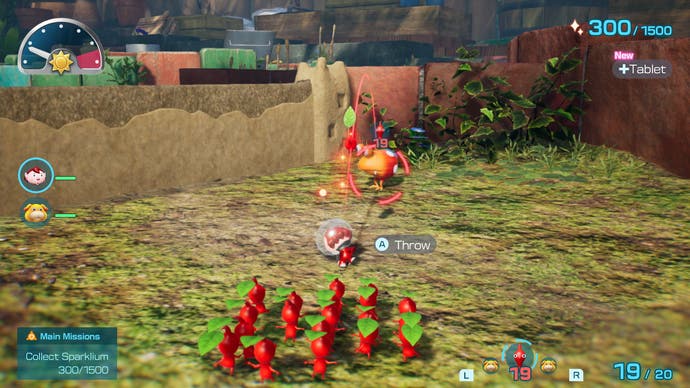
While there's more scope for adventuring and your character is out in the field without another humanoid partner, you're hardly left to feel lonely. You're here to rescue Olimar, but first begin finding members of another rescue squad that arrived in the area before you. Once gathered up, these characters recur in a new hub area, a small explorable section you strike out from each day, but where you can check in with allies first on your progress. Think of it like a playable version of the ship scenes from Pikmin 3, where your crewmates discuss what to do next.
Pikmin 4 currently feels like a leap forward for the series, and one that's also not afraid to look back at the best of the franchise from the past. The return of Pikmin 2's caverns is an extremely welcome move, and they remain a challenging highlight despite the many other new features designed to ease players in. I'm still too early to have encountered Pikmin 4's other new variety - Glow Pikmin - which look like they'll come as part of the game's new Night Expeditions. There's also a whole other Challenge mode lying on the game's main menu I've not been able to try yet either.
If you're keen to try Pikmin 4 yourself, you don't have long to wait. A free and generous-sounding demo will arrive this week on 29th June, and you'll be able to carry your progress over to the game's full launch, on 21st July. It's been a long wait, but there's just a few weeks longer to see what else Miyamoto and the Pikmin team have in store.
